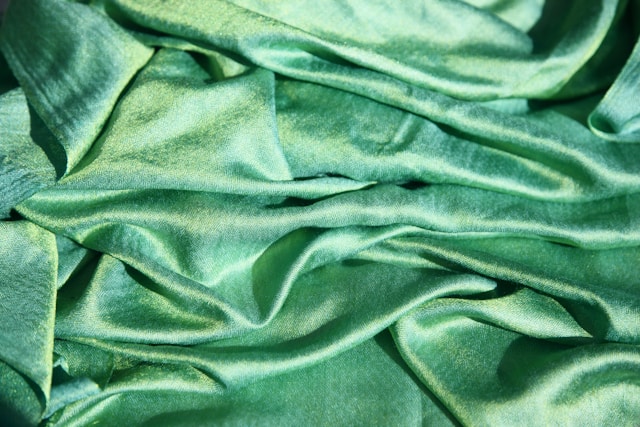Choosing the right bedding can make the difference between a nice bedroom and a bedroom you can’t wait to come home to. However, with so many choices out there, how can you know which are the best sheets to buy? Terms like thread count and weave are thrown around in the bedding retail industry — without ever really explaining them to customers.
In this short guide, you’ll learn why the weave matters in bedding choices and how to pick sheets you’ll love getting into every night.
Bedding Weave Explained
The weave of a fabric describes how the horizontal and vertical threads mesh together to create the fabric. One direction of the thread is called the warp, and the other is called the weft. The most common weave pattern is one over and one under. That’s the weave pattern used in standard percale bedsheets — the basic cotton sheets found in most regular bedding sets. If you look closely, you can see the weave pattern in percale. It looks a little like a tiny, repeated noughts-and-crosses grid.
An alternative weave is one thread over, and three threads under. This weave creates sateen fabric, characterised by a soft, smooth finish. It’s often quite reflective and may use very lightly twisted thread to create an even softer feel. Sateen is a popular bedsheet choice because it’s still durable and breathable, like percale, but feels a bit more luxurious. Sateen and satin aren’t the same — sateen is generally made of cotton whereas most satin sheets are synthetic or semi-synthetic.
What About Thread Count?
Another quality measure you’ll often see on bedding sets is the thread count. Hotels will often advertise that they have beds with high thread count sheets as a major selling point. But what does it mean?
Thread count is how many threads pass through a square inch of fabric — this measurement is always done in imperial rather than metric format. Threads are counted in both directions, so it’s a way of letting the buyer know just how tightly the fabric is woven. In general, the higher the thread count, the better quality the sheets. However, buyers should note that this doesn’t apply to all materials.
Percale sheets should have a thread count of at least 200 so they don’t feel rough or scratchy. Sateen weave sheets may have a 300-600 thread count, with the higher thread count feeling silky smooth.
Linen sheets, on the other hand, have a low thread count. As a tougher, more fibrous thread, if it’s woven too tightly, it can become stiff and uncomfortable. So, always check that the material you want has an appropriate thread count. As a quick guide:
- Bamboo sheets should have a thread count of around 300-500
- Cotton percale: 200-400
- Egyptian cotton: 300-400
- Sateen: 300-600
- Linen: 80-140
Silk sheets are measured in momme, based on the silk’s weight. Other fabrics for bedding choices are measured in grams per square meter (GSM).
Other Factors to Consider When Buying Bedding
As well as the weave and thread count, you should consider the material the sheets are made of. Cotton is the “go-to” choice for most duvet and sheet sets, simply because it’s so versatile. Cotton is plant-based so it’s largely sustainable with proper farming practices. It’s also hypoallergenic, making it ideal for anyone with sensitive skin or allergies.
However, even if these are the most important qualities, there are alternatives. Although slightly less smooth, linen sheets are highly breathable and also hypoallergenic. Some people don’t like the feel straight out of the pack, but linen softens after being washed. Bamboo sheets are also soft and natural. Modal is a fairly recent semi-synthetic alternative. It’s made from beech tree fibres that have been chemically altered to make them suitable for weaving. Modal isn’t as durable as cotton, but it’s extremely soft and comfortable.
Where to Buy Soft, Comfortable Bedding
Whatever weave or thread count you’re looking for, make sure you purchase your bedding sets from a reputable retailer. Look for impressive online reviews and ratings — from independent sources as well as the site itself. Check if they offer a guarantee and what their delivery options are. It also helps to look for a retailer that stocks a range of designers as there will be more choices in terms of materials and designs.
Remember, it’s your bed, so when it comes to bedding choices, choose the weave and thread count that feels best to you.

